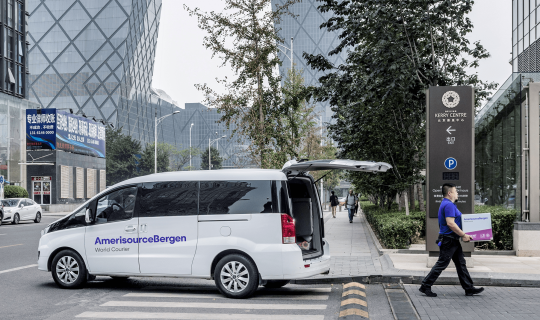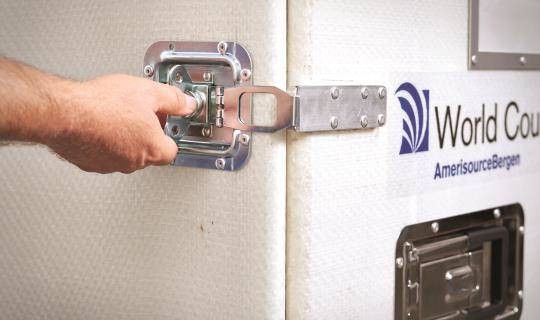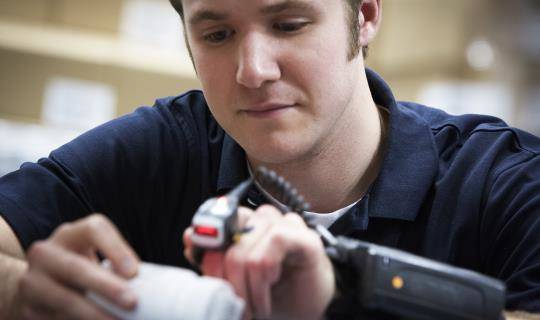Article: Pushing the Limits of Temperature Control
By World Courier
This article first appeared in Pharma Focus Asia, 1 December 2016.
1. What is the current state of temperature-controlled transport?
Today’s pharmaceutical environment has become increasingly complex, with more specialty products like biologics, injectable and clinical trial drugs, being shipped than ever – which in turn raises the stakes, and the costs, of mishandling. There is a greater need for more sophisticated and personalized temperature control solutions, and one solution will not fit all distribution models. The big takeaway for pharmaceutical logistic providers is that better temperature control and the right packaging is essential to keeping product integrity intact.
The current logistics environment grows more complex as demand for time- and temperature-sensitive transport increases. Pharmaceutical products in particular, are generally high value with very specific temperature requirements, particularly at the clinical phase, thus increasing the importance of state-of-the-art temperature control solutions in the supply chain. All pharmaceutical products must meet exacting specifications with some needing extreme temperature ranges like -35°C to -25°C, with variances of 5°C or less. The industry standard for commercial packaging is 120 hours, or five days, which in our experience is no longer always adequate, particularly when it comes to delivering to remote or more challenging locations with extreme temperatures,or those with extended clearance times, South East Asia or Latin America as examples.
We also see increasing demands from the regulatory bodies and agencies, which can often lead to extended transit times. In the past only the pharmaceutical industry was on the radar of the regulative bodies and somehow responsible for validating and qualifying their partners. Now, the authorities are aiming more and more for the suppliers and the vendors themselves – the freight forwarders, the packaging suppliers, the airlines – anyone participating in the supply chain.
In spite of all of the challenges ahead, I believe there is equally great potential for pharmaceutical logistics and cold chain management. According to Pharmaceutical Commerce’s annual Cold Chain Sourcebook, the overall cold chain market is growing at double the rate of conventional pharma products, and will reach $288 billion (out of a $1.3-trillion) global biopharma market in 2017. These are tremendous figures pointing to a robust area of opportunity.
2. How has pharmaceutical packaging evolved over the years? What are the biggest trends in packaging solutions?
As I said before,120 hours validation time for shipping systems has become the new industry standard, and anything less is no longer really cutting it. As most clinical trials migrate to the emerging markets and patients that are untouched by clinical trials, it has become necessary to lengthen the transport time. Reaching a very remote destination, with a high-value pharmaceutical shipment involves extended transport time because of the potentially limited infrastructure.Our priority now is to raise the industry bar on quality and achieve the same level of temperature control precision to a remote location in an emerging market that we would be using for sending it to New York, or Germany.
The future predicts that we’ll become increasingly reliant on passive shipping solutions, as the old active container systems don’t always offer these longer validation times, and ease of handling into remote locations.With passive-temperature controlled systems, capacity is not restricted, and the shipment size determines the solution used, whether it be single small doses or multiple pallets. The ease of handling is greater because passive systems can be passed through whole journeys with little or no special handling. When passive shipments are stored in the right temperature, the containers can be recharged without further intervention by trained agents at airports, TALKand without accessing the contents, solving the new challenges of extended transit times that we often encounter with pharmaceutical products.
For biologics in particular, there is recognition for better temperature requirements which go beyond the traditional cold chain range of 2–8°C. Many demand tighter ranges from 4-6°C or 4-8°C. ‘Temperature control’ may be a more accurate term compared to ‘cold-chain’ as temperatures control requirements range from at “body temperature”, close to 37°C, to controlled room temperature at 20-25°C, ultra-frozen products which can go as low as -80°C, and at its most extreme Cryo-frozen at -196°C.
To keep up with evolving packaging trends, World Courier has recently launched a series of new packaging innovation solutions. This includes CORE Climate Optimisation Research & Engineering labs in Cologne Germany-our company- owned solutions and centre of research and excellence, and also Cocoon, our state-of-the-art passive temperature control shipping container catered at bulk shipments of highly temperature-sensitive materials and the reliable transport of API and commercial drugs. Together, CORE and Cocoon deliver on maximum reliability, combined with a network of temperature control experts that can help manage shipments from point A to B and everything in between.
3. In 2014 World Courier launched a new Centre of Excellence for Packaging, CORE Climate Optimisation Research & Engineering labs in Cologne, what brought about this launch?
CORE Climate Optimisation Research & Engineering is World Courier’s science-led and data-driven solutions center driven to support clients to make the best and most informed packaging decisions. The origins of CORE labs came about in Rommerskirchen just outside of Cologne Germany, after one of our pharmaceutical customers approached World Courier with a specific packaging question. It became apparent that an off-the-rack solution wouldn’t work, and that we needed to develop a new type of container. From there, it just made sense that, if we developed our own container, we needed to do it internally.
CORE was launched in December 2014 and is our “secret-weapon” to pilot product innovation. CORE labs allows World Courier to partner with shippers to evaluate, validate and where necessary create the right climate-controlled packaging even for the most delicate products that must remain perfectly within specification. All qualifications and learning and development can be done through CORE in-house, and it is this level of precision that we are very extremely proud of.
CORE labs is currently comprised of three distinct areas: a 200m2 packaging production facility, a 200m2 testing and qualification lab, complete with our own temperature testing chamber, and a 600m2 storage warehouse. It is much more than simply a centre of excellence for packaging. We now have the capability to gather end-to-end insights to test, all in-house, how different packaging solutions perform in identical situations, allowing us to refine improvements and develop the most advanced packaging technologies in the business. CORE’s commercial grade climate chamber is used to test packaging across hundreds of transport lanes before actually putting anything on-ground and into service in order to select the most appropriate option. Shippers can now make more informed decisions across their entire specialty logistics portfolio and ultimately, translate that into more cost-efficient decisions with a best-in-industry turnkey solution from a trusted service partner.
4. What are the key challenges in the market today that World Courier is looking to solve by creating Cocoon?
Cocoon is the first innovation to come out of World Courier’s CORE Labs, and we’re all very excited and proud to unveil it to the world. Cocoon is World Courier’s new proprietary best-in-class passive packaging system for pallet-sized shipments, in multiple temperature ranges. Compared to the industry standard, Cocoon delivers better thermal performance, while weighing 30% less than comparable boxes which offers superior reliability and lower shipping costs.
The key challenges Cocoon addresses are improved reliability for temperature-controlled shipments and lowered shipping costs. Cocoon is made with a new polypropylene-based glass-reinforced honeycomb composite that offers thermal protection and stability well beyond any conventional passive packaging currently on the market. It is perfectly suited for larger-sized, highly temperature-sensitive and high-value shipments, with lengthy transit times. We know from experience that Cocoon surpasses the industry standard of 120 hours, in one instance, a Cocoon traveled from Austria to Baghdad in Iraq. The container maintained internal temperature for a full 13.5 days, including 10 days of storage during customs clearance, in significantly out-of-spec warehouse temperatures.
As Cocoon units weigh 30% less, and require no external power source during transit as a passive system, it is the most cost-effective solutions on the market. In our view, Cocoon is the best passive container solution in existence anywhere in the world today.
5. What is the outlook / opportunity for innovation in pharmaceutical packaging solutions in Asia?
It was recently reported that Asia Pacific will emerge as the fastest growing market for temperature-controlled packaging1. Asia is an attractive market on many levels - its large population and emerging markets, increasing government initiatives, and growing contract manufacturing activities, are all contributing factors pointing towards its positive outlook2.
Demand from Asia is more global than ever, which means diverse traffic routing and variations of external temperature are bigger considerations when deciding on what type of pharma packaging solution to use. This presents new challenges and problem solving compared to when looking at intra-regional solutions.
Certain emerging markets in Asia coming to the fore may have to deal with fragile or lack of infrastructure. Stakeholders like airlines, ground handlers and airports are major considerations when any company considers innovation in this region. Not all facilities have the capability to support all types of packaging, which is why we see innovations like Cocoon meeting a real need for extended temperature-control beyond the 120 hour mark.
Lastly, the demand for quality and compliance is growing at a faster rate than innovation. Logistics providers that can find ways to implement the most robust system while keeping costs down will have great success in this region. To get to the point of where World Courier is today, being viewed as the most trusted specialty logistics company in the world, it takes an extensive global network (in Asia alone we operate in 11 company-owned offices), and a constant eye on innovation. There’s a quote from Grace Hopper, a computer scientist who said that “The most dangerous phrase in the language is “we’ve always done it this way”. I love this saying, and I think innovations like CORE and Cocoon prove that there are better, lighter, and more cost-effective ways of doing things that have the potential to take the industry by storm.
1. Temperature Controlled Packaging Solutions Market: Global Industry Analysis and Opportunity Assessment 2015-2025. October 2016. http://www.futuremarketinsights.com/reports/temperature-controlled-packaging-solutions-market
2. Strong Growth Ahead for Contract Manufacturing.Market’s robust in 2015, but for how much longer? January 2016. http://www.pharmamanufacturing.com/articles/2016/strong-growth-ahead-for-contract-manufacturing/?show=all
2. Strong Growth Ahead for Contract Manufacturing.Market’s robust in 2015, but for how much longer? January 2016. http://www.pharmamanufacturing.com/articles/2016/strong-growth-ahead-for-contract-manufacturing/?show=all



